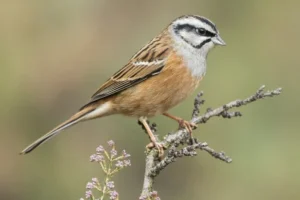Petronia article by Sadiq Amin:
The Petronia is a genus of small, sparrow-like birds in the family Passeridae. These birds are primarily found in Asia and Africa. They are known for their adaptability to various habitats, including rocky and open country environments, such as scrubland, farmland, and semi-desert regions.
Here are some key details about Petronia birds:
1. Appearance:
-
Size:
Petronia birds are small, typically measuring between 12 to 15 cm (4.7 to 5.9 inches) in length.
-
Plumage:
They generally have brownish, streaked plumage with some species having lighter undersides. Many species have a distinctively streaked back and plain head.
-
Beak:
Their beak is short, conical, and well-suited for feeding on seeds and grains.
-
Legs:
Petronia birds have short, stout legs that help them move on the ground or rocky surfaces.

Petronia-Sparrow
2. Habitat:
- Petronia species are typically found in rocky hills, grasslands, open woodland, and farmland. Some species are more adapted to arid and semi-desert areas.
- They are often seen in areas where they can forage on the ground, especially in regions where seeds and small insects are abundant.
3. Behavior:
- Diet: Petronia birds are mainly granivorous (seed-eating), though they may also consume small insects and other invertebrates.
- Social Structure: They tend to be social birds, often seen in small flocks foraging together.
- Nesting: They typically nest in cavities in rocks, trees, or even man-made structures like buildings. They may use abandoned nests of other birds.
- Vocalizations: Petronia birds have simple songs and calls, which are often described as short chirps or trills.
4. Species:
There are several species within the Petronia genus, including:
-
Petronia petronia
(Rock Sparrow): This species is widely distributed across parts of Europe and Asia and is often seen in rocky habitats.
-
Petronia longirostris
(Long-billed Petronia): Found in dry regions of India, this bird is known for its longer beak.
-
Petronia superciliaris
(White-crowned Petronia): Common in India and parts of Southeast Asia, with distinctive white markings on its head.

Petronia-Sparrow
5. Conservation:
- Most species of Petronia are not currently considered to be at significant risk. However, some species could face local threats due to habitat loss or overgrazing by livestock in certain regions.
Petronia birds are interesting due to their ability to adapt to different environments and their reliance on seeds and small invertebrates as a primary food source. They often serve as indicators of the health of grassland and rocky habitats.
Want to see natural art on body, meet Luna moth butterfly.